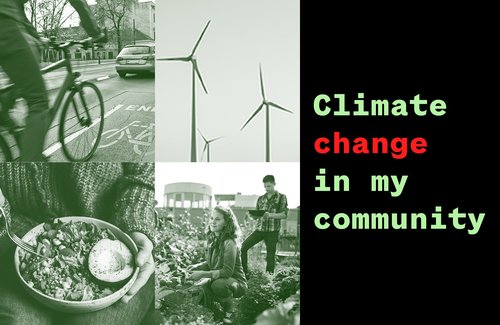
Heatwaves, wildfires, droughts and flooding, changes to agriculture, health effects on animals and humans; these are just a few of the many ways the climate crisis is showing up on a local, national, and world stage.
SRL would like to know: what does climate change look like in your community?
Questions to consider:
Three tips for the kinds of stories SRL is interested in publishing:
See below for more student produced examples.
We have a rolling deadline to accept climate stories. Please use our pitch form to submit your story idea. Review these tips about how to pitch. If your pitch is accepted SRL staff may be able to support the production of your story.
If you produce a climate/environment story on your own or with your school, be sure to tag us when you publish it!
A set of moral principles based on standards of right and wrong, usually in terms of obligations, benefits to society, fairness, or specific virtues.
Journalism is the activity of gathering, assessing, creating, and presenting news and information.
Ethical journalism strives to ensure the free exchange of information that is accurate, fair and thorough. An ethical journalist acts with integrity. Ethical journalism should be accurate and fair. Journalists should be honest and courageous in gathering, reporting and interpreting information.
Belief that someone or something is reliable, good, honest, effective, etc.
Prejudice in favor of or against one thing, person, or group compared with another, usually in a way considered to be unfair.
An obligation or willingness to accept responsibility or to account for one's actions.
Media refers to all electronic or digital means and print or artistic visuals used to transmit messages.
A subject or problem that people are thinking and talking about
A group of people who live in the same area (such as a city, town, or neighborhood). It can also be a group of people who have the same interests, religion, race, etc.
Immediate, current information and events are newsworthy because they have just recently occurred. It’s news because it’s “new.”
These can include low/high angles, dollies, POVs (point-of-view), rack focus, etc.
A selection of separate sections of video that form a continuous, edited piece.
An investigation into and study of sources in order to establish facts and reach new conclusions.
A source is an individual, company, document or more that can provide information to fuel a new story. In order for a story to be considered verified and to maintain a reputation as a news outlet, it is important to have a credible source.
Sounds produced in their actual setting. Natural sound, commonly known as NAT sound, puts the viewer in the place the story was told by enhancing the scene(s) with video containing rich audio such as a musician singing at a train station, a storm approaching, or the sound of a tractor plowing the field.
Free from mistake or error. Coverage of topics and facts in appropriate detail.
Journalists should strive for accuracy and truth in reporting, and not slant a story so a reader draws the reporter’s desired conclusion.
A conversation with someone who is relevant to your story. Typically done over the phone or through video conferencing, but they can be done in person, too.
The process of verifying the accuracy of a piece of information.
A desire to learn and know about something or anything.
The supplemental footage used to visually support your A-ROLL.
Search: broll.
Explain points of agreement and disagreement experts have about interpretations and applications of disciplinary concepts and ideas associated with a supporting question and explain how supporting questions contribute to an inquiry and how, through engaging source work, new compelling and supporting questions emerge. (NCSS D1.3.9-12 - D1.4.9-12)
Historical understanding requires recognizing this multiplicity of points of view in the past, which makes it important to seek out a range of sources on any historical question rather than simply use those that are easiest to find. It also requires recognizing that perspectives change over time, so that historical understanding requires developing a sense of empathy with people in the past whose perspectives might be very different from those of today. (NCSS D2.His.4.9-12 - D2.His.8.9-12)
Journalism
Climate Change
Race and Justice
Science
STEM
Active Prompts
Projects
Beginner
Intermediate
Advanced
4-6 weeks